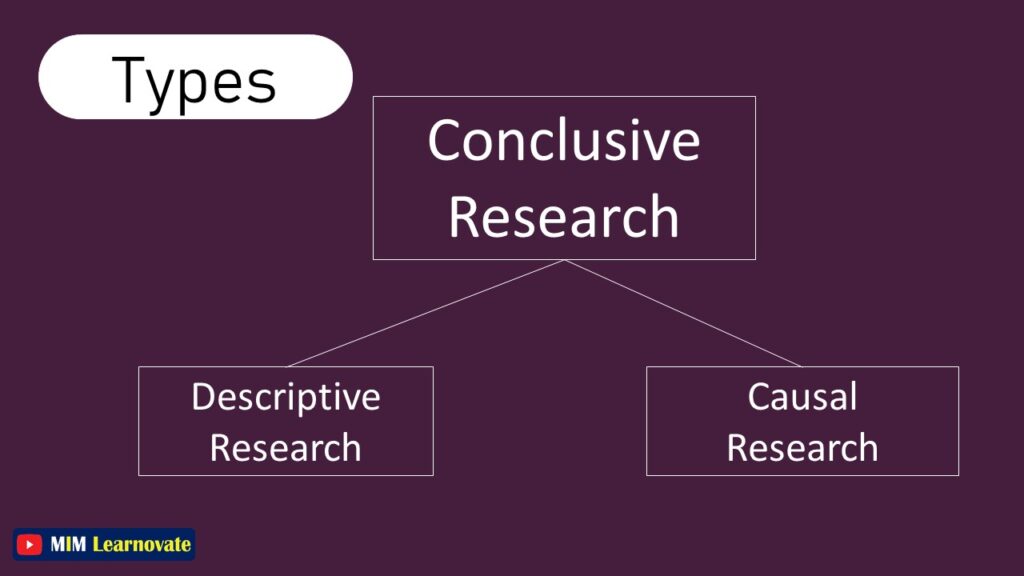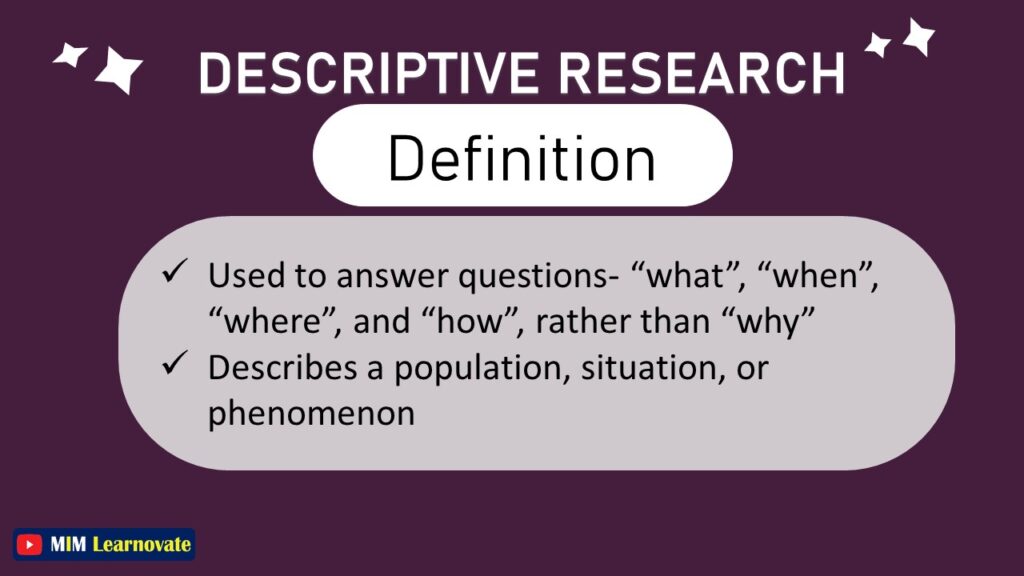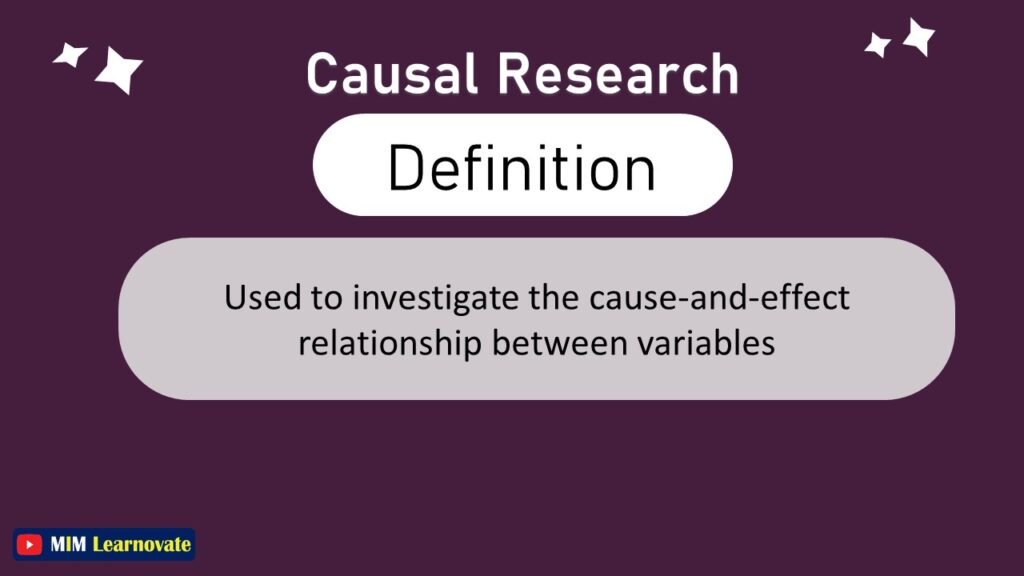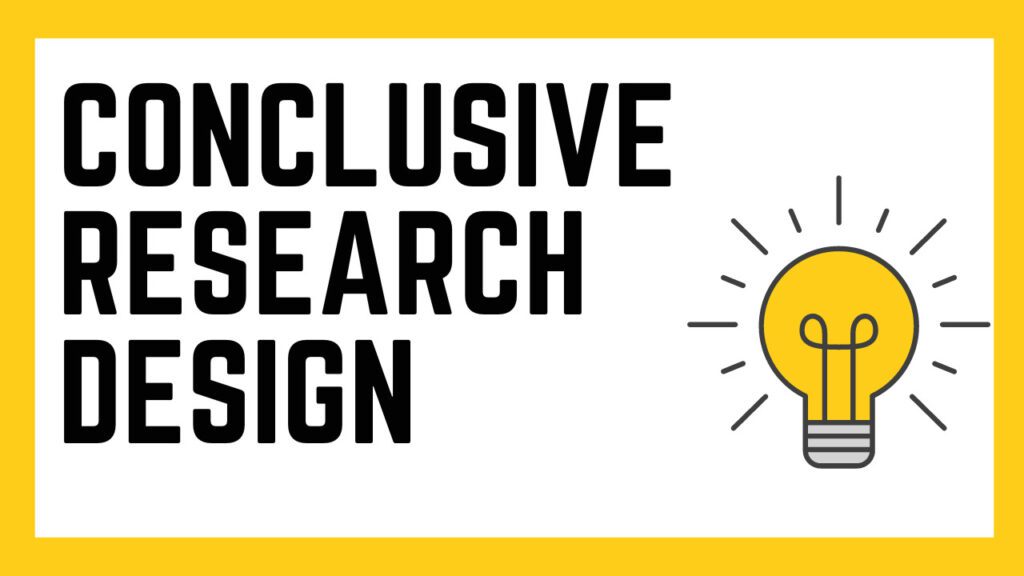What is Conclusive Research?
In this article, you will learn about conclusive research design, its types and advantages.
Conclusive research designs are employed to gather data that can be used to draw conclusions or make decisions. The research design used in this study mostly collects quantitative data, which can have specific numerical values.
For this reason, in order to support or refute a hypothesis, conclusive research relies on the use of highly structured procedures, such as surveys with closed-ended questions.
The ideas obtained through exploratory research can be validated and quantified using conclusive research design.

Conclusive research techniques are especially made to help the manager decide, assess, and pick the best course of action to take in a particular circumstance. Conclusive research approaches differ from exploratory research techniques in that they are frequently more formal and structured. The majority of conclusive research methods rely on sizable representative samples and quantitative analysis of the data they yield. Many times, administrative decisions are made directly based on the findings because they reflect a broader population of respondents.
At this point, it must be highlighted that even though the sample size was big, the conclusions do not necessarily represent the opinions of all consumers; rather, these kind of studies offer a broad generalization about consumer and market behavior.
However, in other occasions, the research may partially elucidate the problem and much will be left to the manager’s discretion. In some cases, the research may get close to suggesting precise customer and market behavior.
Types of Conclusive Research
There are two main types of conclusive research:
- Descriptive Research
- Causal Research

Descriptive Research
Instead than focusing on the “why,” descriptive research addresses questions like “what,” “when,” “where,” and “how.”

Determine the frequency of an event or the relationship between two variables using a descriptive study approach. Usually, the initial relationship between two variables drives this kind of design. For instance, descriptive study can examine variations in respondents’ soda consumption over time based on their age, income, and occupation.
The descriptive research design is rather popular in the field of marketing. When the following is the research’s objective, it is helpful:
- to anticipate consumer and market behavior.
- to provide a succinct summary of a certain group.
Causal Research
Causal Research describes a population, circumstance, or phenomena. Investigating the cause-and-effect relationship between variables is done through causal research.

When understanding why specific market occurrences take place in the manner they do is one of the study objectives, causal research is best suited.
To put it another way, causal research helps identify which market variable has what impact on other market elements. However, in order to evaluate this, data collection must take place in a controlled environment, meaning that all variables save the causation variable must be constant or behave in the opposite direction.
After balancing the effects of other variables, researchers change the causation variable and assess the change in the effect variable. The causal design has two different features: manipulation of the suspected causative variable and control over other crucial variables.
Comparison of Descriptive and Casual Research
| Research Design | Focus | Characteristics | Methods Employed |
| Descriptive | Frequency of events | Structured and based on hypotheses | Quantitative research, Surveys, Observation, panel data |
| Causal | Establish the causes and effects | Variable control | Experimentation |
Pros of Conclusive Research
Conclusive research has the following benefits:
- Describes the Context of the Issues: Conclusive research offers a trustworthy and accurate representation of the people.
- Establishes Causality: When attempting to establish the causal relationship between two variables, conclusive research is a useful tool
Purpose of Conclusive Research
The goal of conclusive research is to employ a reliable research tool to give a trustworthy or representative picture of the population. It will also test hypotheses in the case of formal research.
Other articles
Please read through some of our other articles with examples and explanations if you’d like to learn more about research methodology.
Statistics
Methodology
- Research Methods
- Quantitative Research
- Qualitative Research
- Case Study Research
- Survey Research
- Conclusive Research
- Descriptive Research
- Cross-Sectional Research
- Theoretical Framework
- Conceptual Framework
- Triangulation
- Grounded Theory
- Quasi-Experimental Design
- Mixed Method
- Correlational Research
- Randomized Controlled Trial
- Stratified Sampling
- Ethnography
- Ghost Authorship
- Secondary Data Collection
- Primary Data Collection
- Ex-Post-Facto
Research
- Table of Contents
- Dissertation Topic
- Synopsis
- Thesis Statement
- Research Proposal
- Research Questions
- Research Problem
- Research Gap
- Types of Research Gaps
- Variables
- Operationalization of Variables
- Literature Review
- Research Hypothesis
- Questionnaire
- Abstract
- Validity
- Reliability
- Measurement of Scale
- Sampling Techniques
- Acknowledgements




3 Comments
There is noticeably a bundle to know about this. I assume you made certain nice points in features also.
Dear mimlearnovate.com owner, Your posts are always a great source of information.
Hello mimlearnovate.com admin, Your posts are always well structured and easy to follow.